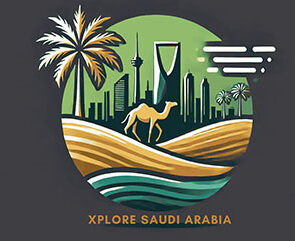
Cinema has always been a powerful medium for storytelling, providing a window into the culture, emotions, and values of different societies. Over the years, the global film industry has evolved, with filmmakers pushing the boundaries of creativity, technology, and audience engagement. However, one of the most notable and ground breaking moments in recent Arabic cinema has been the release of Esaaf, the first-ever Arabic-language film to be screened in IMAX.
Esaaf, which translates to “ambulance” in Arabic, premiered in Saudi Arabia on April 17, 2025. Directed by Colin Teague, this film is a testament to the growing influence of the Middle Eastern film industry, particularly Saudi Arabia, which has made significant strides in recent years. This release marks a pivotal moment not only for the Saudi film industry but for Arabic cinema as a whole. It signals the rise of a new era of storytelling that seeks to connect with global audiences while staying true to its cultural roots.
A New Era for Saudi Cinema
Saudi Arabia has been on a cinematic journey of its own for the past decade. The country, traditionally known for its strict regulations on entertainment and cinema, opened its doors to the film industry with the lifting of the cinema ban in 2018. Since then, there has been a concerted effort to grow and develop the local film industry, with a focus on producing content that is both culturally relevant and globally appealing. The success of Esaaf is evidence of this effort, and its IMAX release represents a significant achievement in the evolution of Saudi cinema.
The Saudi government has supported the growth of the film industry through initiatives like the General Entertainment Authority and Riyadh Season. These efforts aim to establish Saudi Arabia as a hub for entertainment and cultural exchange in the region. With Esaaf being the first Arabic film to be screened in IMAX, it is clear that the country is eager to make its mark on the global cinematic landscape. The film’s release is a clear indication that Saudi Arabia is not just looking to create films for local audiences, but is aiming for global recognition in the competitive world of cinema.
IMAX: A Game-Changer for Arabic Cinema
One of the most striking features of Esaaf is its screening in IMAX, a significant technological leap for Arabic-language films. IMAX is known for its immersive viewing experience, featuring larger-than-life visuals, crisp audio, and unparalleled clarity. The decision to release Esaaf in IMAX format is a game-changer, not just for Saudi cinema, but for Arabic filmmaking as a whole.
IMAX provides filmmakers with a canvas to push the boundaries of visual storytelling. The scale and clarity of IMAX visuals enhance the film’s action scenes, making them more gripping and intense. The format also allows for more intricate details to shine, whether it’s the breath taking scenery or the subtle nuances of the characters’ expressions. By utilizing IMAX technology, Esaaf stands as a prime example of how Arabic cinema can embrace global filmmaking trends and present films on par with the best in the world.
Moreover, the IMAX release of Esaaf opens the door for future Arabic-language films to be screened in similar formats. It demonstrates that there is a growing appetite for high-quality Arabic films, and that audiences around the world are ready to embrace cinema from the region. This shift in audience perception is crucial for the long-term success of Arabic cinema on the global stage.
The Global Message of Esaaf
The release of Esaaf is not just significant for its technological achievements or its entertainment value; it also carries a larger message about the potential of Arabic cinema to make an impact on the world stage. As a product of Saudi cinema, Esaaf represents the country’s cultural vibrancy and its emerging role as a global player in the entertainment industry.
The global message embedded in Esaaf is one of cultural exchange, storytelling, and collaboration. It reflects a new era of openness in the Middle East, where local filmmakers are empowered to create films that resonate not only with their own culture but also with international audiences. The film is an invitation to the world to engage with the rich and diverse storytelling traditions of the Arab world.
In addition, Esaaf is a step towards breaking down cultural barriers in the global film industry. While Hollywood and other major film industries have long dominated the global cinematic landscape, Esaaf shows that Arabic cinema is ready to compete on equal footing. It challenges the conventional narratives about what cinema should look like and invites people from all walks of life to experience a new and fresh perspective.
The Future of Arabic Cinema
Esaaf is not just a standalone achievement; it is a glimpse into the future of Arabic cinema. The success of the film, coupled with its IMAX release, sends a strong message to filmmakers and production houses in the Arab world that there is a global market for high-quality, culturally rich films. With the support of government initiatives, private production companies, and international partnerships, the future of Arabic cinema looks promising.
As more films like Esaaf gain international recognition, the Arab world will continue to be a hub for cinematic innovation and creativity. This will not only elevate the profile of Arabic films but also inspire future generations of filmmakers in the region to push the boundaries of storytelling, technology, and cultural expression.






It’s exciting to see Jeddah becoming a vibrant hub for entertainment and culture. With City Walk’s expansion and attractions like Adrenaland and Anime Village, there’s something for everyone!